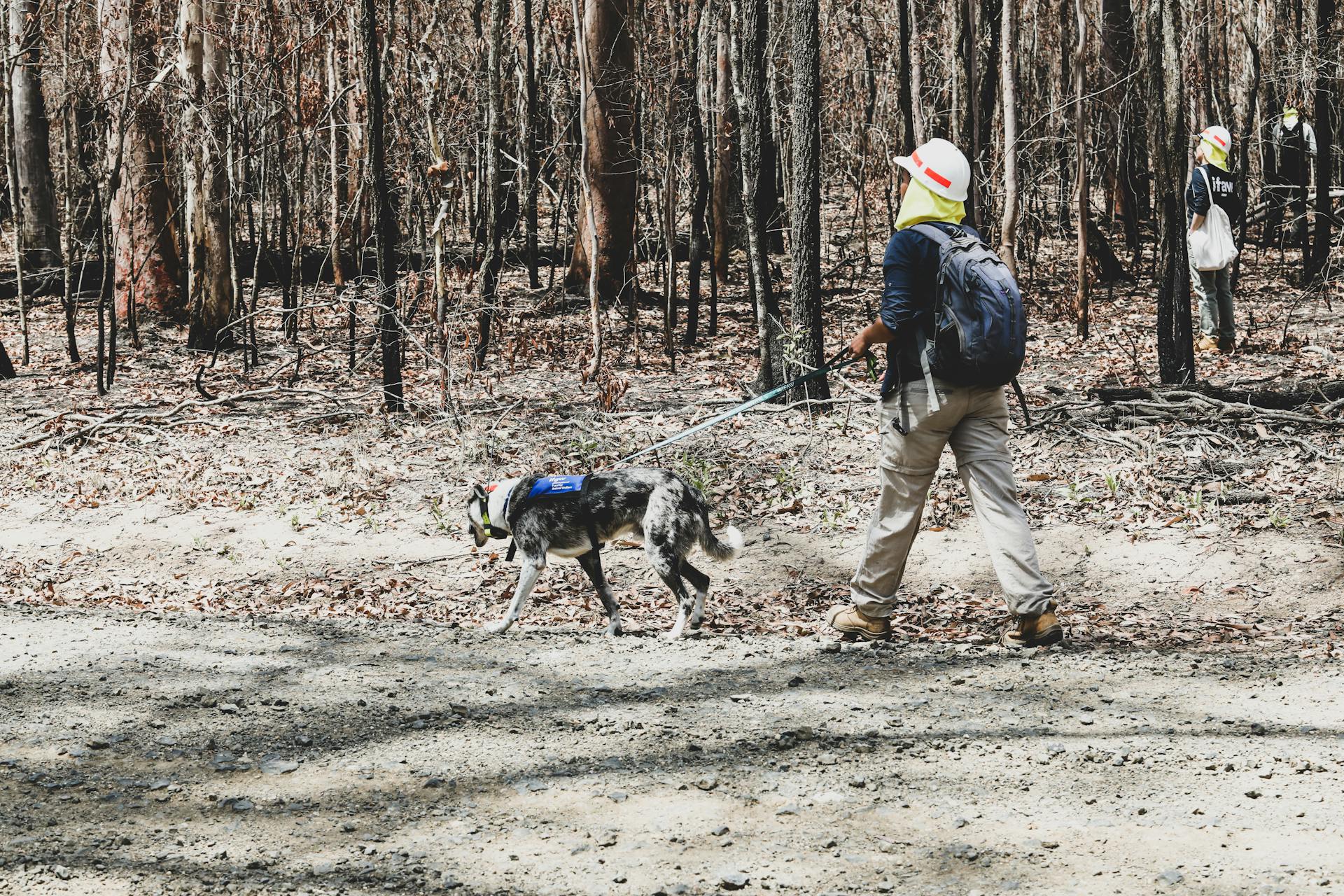
Puppy strangles, also known as juvenile cellulitis, can have long-term effects on your furry friend.
The condition can lead to scarring, which may cause permanent skin discoloration or texture changes.
Some dogs may experience recurring episodes of puppy strangles, which can be triggered by various factors, such as allergies or skin irritants.
Recovery from puppy strangles can take several weeks to several months, and in some cases, the condition may require ongoing management to prevent future occurrences.
Worth a look: Pictures of Puppy Strangles
Causes and Symptoms
Puppy strangles is a condition that can be mistaken for other viral infections, such as mumps, due to similar swelling of the jaw and neck.
The most common symptoms of puppy strangles include swelling on the face, especially around the lips, eyelids, and muzzle, as well as ears, with hair loss and oozing pimples and enlarged lymph nodes under the jaw.
Pustules, which are similar to pimples but contain yellow fluid called pus, can appear on a puppy's skin when they have this condition. These pustules can be painful and can lead to secondary infection.
In severe cases, puppy strangles can cause permanent hair loss and scarring.
For more insights, see: Dog Has Lump on Bottom Jaw
Symptoms

Symptoms of puppy strangles can be quite concerning, but understanding them can help you identify the issue early on. Swelling of the face, especially the lips, eyelids, and muzzle, is a common symptom.
The swelling can also occur in the ears, leading to hair loss and oozing pimples. Pustules, similar to pimples but containing yellow fluid called pus, can appear on your puppy's skin.
These lesions can be painful and may rupture, leading to secondary infection. In severe cases, permanent hair loss and scarring may occur.
Other symptoms can include a lack of appetite, joint pain and swelling, fever, and lethargy. If you notice any of these symptoms, it's essential to call your veterinarian.
The first sign of juvenile cellulitis is usually an acute swelling of the face and muzzle. This swelling is followed by the development of raised bumps and pustules over the face, muzzle, and ears.
These pustules may rupture and crust over, resulting in heavy scabbing across the affected areas. If severe lesions develop, especially around the eyes, permanent scarring may develop.
You may also notice swelling under your dog's jaw, which can be a sign of the submandibular lymph nodes becoming swollen and tender. As the disease progresses, these lymph nodes may rupture and drain, leaving oozing tracts and openings in your dog's skin.
Typically, dogs affected with juvenile cellulitis do not feel well and may experience a loss of appetite. They may feel warm to the touch, as they often develop a fever.
Here's an interesting read: Skin Relief for Dogs with Allergies
Dog Recovery and Management
Recovery from puppy strangles typically takes a few days to a couple of weeks, with most dogs showing improvement within 10 to 14 days.
Some dogs may experience permanent hair loss or skin scarring after the condition has resolved.
It's essential to avoid popping any pustules, as this can be painful for your dog and increase the risk of a bacterial infection.
Once treated, puppy strangles usually doesn't flare up again.
You might enjoy: Strangles in Puppy
Treatment and Recovery
Dogs with puppy strangles will start to get better within a few days of starting treatment.
It may take 10 to 14 days for the condition to fully resolve.
Some hair loss or skin scarring might be permanent.
Avoid popping any pustules as this can be painful to your dog and make it easier for a bacterial infection to set in.
Once treated, puppy strangles usually does not flare up again.
Worth a look: Is Puppy Strangles Fatal
Frequently Asked Questions
Will hair grow back after puppy strangles?
Hair loss due to puppy strangles may be permanent, but in some cases, hair may grow back over time. It's essential to consult a veterinarian for proper treatment and guidance on the condition's progression.
Can you breed a dog that has had puppy strangles?
Responsible breeders typically avoid breeding dogs that had puppy strangles as puppies to prevent passing on the predisposition. Notifying the breeder if your puppy is diagnosed can help prevent the condition from being passed on to future generations.
Does puppy strangles stunt growth?
No, puppy strangulation does not stunt growth, but it can cause scarring.
Sources
- https://vcahospitals.com/know-your-pet/juvenile-cellulitis-puppy-strangles
- https://www.webmd.com/pets/dogs/what-are-puppy-strangles
- https://www.akc.org/expert-advice/health/puppy-strangles/
- https://dremmanuelfontaine.com/2016/06/11/blog-juvenile-cellulitis-aka-puppy-strangle-16-important-facts-for-dog-breeders/
- https://www.petmd.com/dog/conditions/skin/c_dg_puppy_strangles
Featured Images: pexels.com

